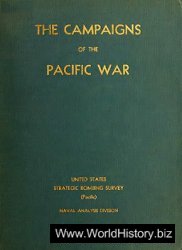Livs, or Livonians, a Finnic-speaking people, lived in coastal regions of present-day southwestern Estonia and northwestern Latvia around the Gulf of Riga, including coastal Courland, a region of Latvia. They are classified as Baltic (or Western) Finnics, a subgroup of Finno-Ugrians, as distinct from the Volga (or Eastern) Finnics. To the north were the Esths, also Finnic speaking; to the south, the Balticspeaking Curonians; and to the east, the Balticspeaking Letts. Along with the Letts the Livs are considered ancestral to modern Latvians (see Latvians: nationality).
Origins
Balto-Finnics perhaps reached the Baltic region as early 3000 b. c.e. It is theorized that the Livs were the first tribe to separate from other Balto-Finnics, but this idea has not been confirmed archaeologically.
LANGUAGE
The Livonian language is in the Balto-Finnic group of Finnic in the Finno-Ugric language family and is closely related to Finnish.
Modern dialects include East and West, with a number of subgroups. The Livonian written language is based on the East dialect, with some Latvian vocabulary, pronunciation, and grammar.
The first written mention of the Livonians in the Baltic region dates from the 11th century C. E. In the mid-12th century German merchants started entering coastal regions. Father Meinhard arrived on Liv territory in the 1160s. As an enticement to conversion of the indigenous population, he built a castle to protect them. In return he induced the Livs to be baptized in the Western Dvina River. After the castle was completed, the local population returned to the river, this time to wash off their baptism. Angered, Father Meinhard convinced Pope Innocent III that a more aggressive approach was needed. In 1198 Pope Innocent II sanctioned the first Baltic crusade.
Bishop Albert von Buxhoevden of Bremen arrived in 1199 and founded Riga to the south in 1201. The next year he founded the military and religious order Brothers of the Sword to Christianize local peoples. The Brothers of the Sword pacified the Livs by 1207, thereby creating a new tax base for the Catholic Church and creating soldiers for the conquest of the remaining tribes. The Livonians had to take part in subsequent military campaigns, including those against the Esths. The Esths and Letts started to settle in the sparsely populated Livonian areas in present-day Latvia. In 1237 the Brothers of the Sword united with Teutonic Knights, who held lands to the south in present-day northern Poland; they became known as the Livonian Order of Teutonic Knights. Livonian interests continued to develop their own state, however. In 1282 Riga joined the Hanseatic League of northern Germany—a group of merchants in the Baltic region—and assumed a central role in east-west trade and control of trade with local tribes over the next centuries.
A dispute in 1557 over the tribute to be paid Czar Ivan of Russia by the diocese of Dorpat in Livonia was among the reasons for the Great Livonian War. This was followed by a pact of mutual aid between the Germanic knights and Polish king Sigismund II, ruler of a dynastic union of Poles and Lithuanians against Russian incursions. Ivan IV (Ivan the
Terrible) used the failure to pay tribute and the pact as justification for military action against Livonia and its allies, probably to acquire a seaport on the Baltic. The Great Livonian War lasted from 1558 until 1582. Ivan was at first successful but later was defeated by Poland and sweden. The Livonian Order disbanded, and Livonia was partitioned in 1561. The dynastic union of Poland and Lithuania absorbed the provinces of Latgale and Vidzeme to the north of the Western Dvina (Daugava) River; the provinces Kurzeme and Zemgale to the west and south became Courland, an autonomous duchy under Polish-Lithuanian sovereignty.
Most Livs had merged with the Latvians by the 19th century. During World War I (1914-18) German troops occupied Courland, and many Livs departed their villages in Courland, never to return. In the two decades after the war a cultural renaissance occurred, with attempts to revive the language in schools and publications. In 1940 Latvia was annexed by the Soviet Union (USSR), and ethnic culture was suppressed. During World War II (1939-45) many Livs again had to flee their home. Latvia became an independent republic in 1991. The Livonian Union (formerly the Livonian Cultural Society) has since attempted to preserve the linguistic and cultural heritage of the Livs.
The present situation of the Livs, with few people identified as direct descendants of the ancient tribe, demonstrates that language is critical to cultural identity. Few people speak their Finnic tongue; the majority of surviving Liv descendants now speak Latvian, a Baltic language. As a result few other traditions are preserved.




 World History
World History









